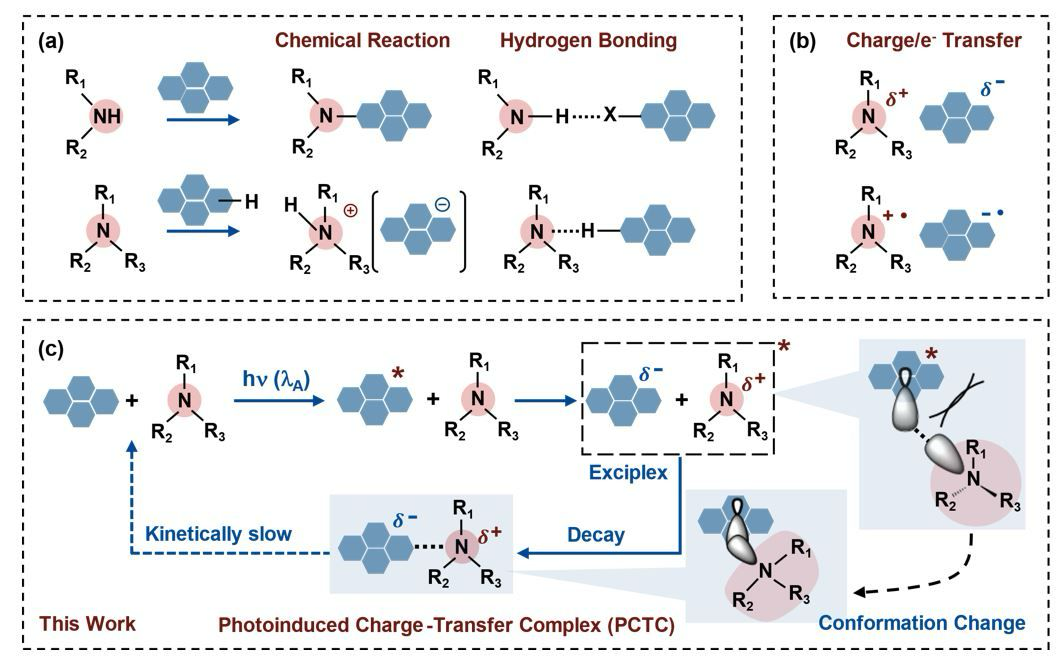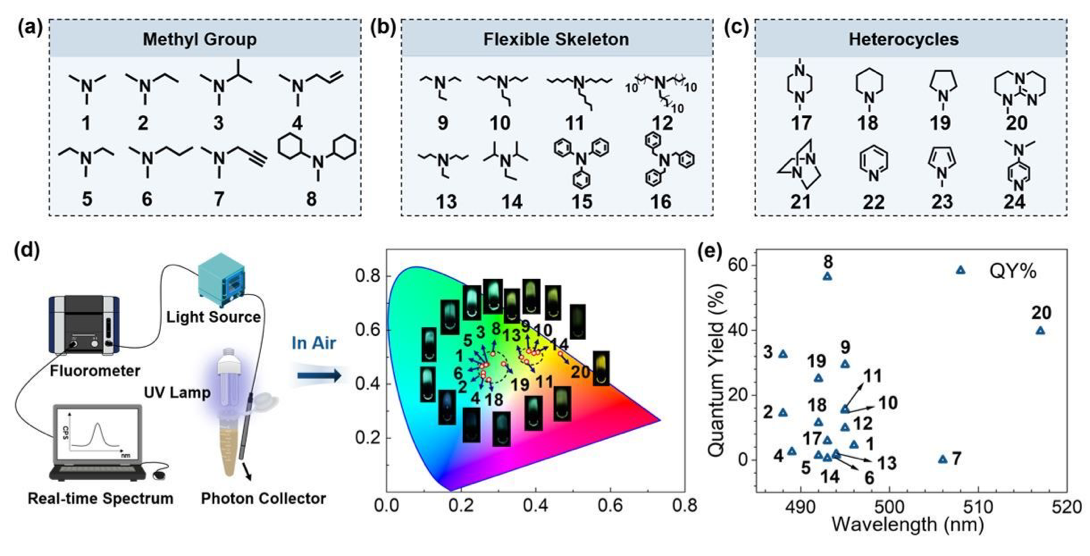Researchers from the University of Science and Technology of China (USTC), led by Professor ZHANG Guoqing, have developed a rapid fluorochromic sensing method for detecting tertiary amines and opioids. Their study was published in the Journal of the American Chemical Society on April 14.
Detecting organic amines is critical for pharmaceutical analysis, food safety, biomedical diagnostics, and clinical testing. Traditional luminescence-based amine detection mainly relies on fluorescence quenching, limiting sensitivity and selectivity.

The schematic diagram of the traditional method for detecting tertiary amines and the mechanism for detection through photoinduced charge transfer complexes. (Image by USTC)
In contrast, the research team introduced a fluorescence color-change strategy. Upon light exposure, tertiary amines form exciplexes with photoactivated naphthalimide molecules, which then rearrange into stable photoinduced charge-transfer complexes (PCTCs). This interaction enables the differentiation of structurally similar tertiary amines based on their substituents and molecular flexibility.
The researchers systematically studied three types of tertiary amines—methylated, flexible-chain, and rigid amines—by exposing them to light in the presence of naphthalimide molecules. They found that the photoluminescence quantum yield and emission color were strongly influenced by the amine substituents and molecular flexibility. Under 365 nm UV light, methylated amines rapidly emitted green fluorescence, while flexible-chain amines first displayed yellow fluorescence before eventually shifting to green. This behavior, consistently observed across 24 different amine samples, suggests that methyl groups reduce steric hindrance and promote charge transfer with naphthalimide molecules. The proposed mechanism was further supported by DFT calculations and time-resolved fluorescence measurements.

Portable device capable of distinguishing 20 kinds of tertiary amines with similar structures (Image by USTC)
Building on this mechanism, the researchers developed a portable visual method for detecting natural and synthetic opioids, including heroin, fentanyl, methamphetamine, and metonitazene. Compared to traditional approaches like the Marquis reagent test, their method is faster, simpler, and more suitable for on-site and real-time monitoring.

Comparison between traditional drug detection methods and the new method developed in this work (Image by USTC)
This work follows the group’s earlier discovery of photoinduced charge-transfer complexes, offering further evidence of this phenomenon. It opens new possibilities for trace amine detection and rapid drug screening.
Paper link: https://pubs.acs.org/doi/full/10.1021/jacs.5c00425
(Written by CHEN Yehong, Edited by WU Yuyang, USTC News Center)